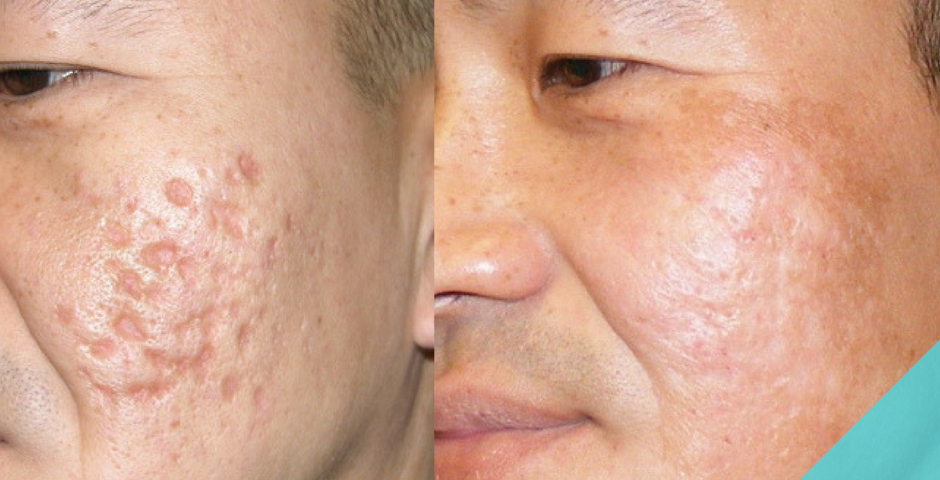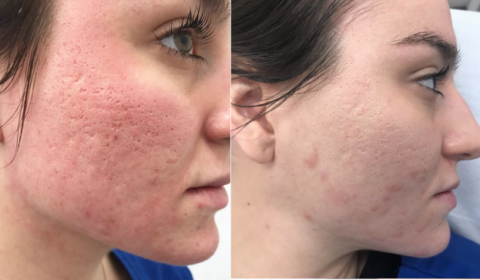Reliable Acne and Acne Scars Treatment: Clear Skin Solutions That Job
Reliable Acne and Acne Scars Treatment: Clear Skin Solutions That Job
Blog Article
Discovering Skin Problems: Identifying and Dealing With Acne Scars for Healthier Skin
Acne scars represent a considerable worry for individuals seeking to maintain healthy and balanced skin, as they can influence both appearance and self-worth. Recognizing the numerous types of marks, from atrophic to hypertrophic, is crucial for determining proper therapy options. While specialist treatments like chemical peels and microneedling can be effective, the relevance of individualized care strategies can not be overemphasized. Preventative actions play an important role in decreasing future scarring. As we discover these elements, one must take into consideration just how the right method can result in transformative results.
Comprehending Acne Marks
Comprehending acne marks is crucial for anyone who has experienced extreme acne, as these marks can have a long-term effect on both physical look and emotional health. Acne scars create when the skin undertakes inflammatory feedbacks during energetic acne lesions. The extent of scarring is frequently influenced by factors such as the sort of acne, its period, and specific skin attributes.
The body's natural healing procedure can result in either atrophic scars, which look like anxieties in the skin, or hypertrophic marks, which are increased and result from overproduction of collagen. In addition, the mental toll of acne marks must not be taken too lightly; numerous people report feelings of humiliation, anxiousness, and decreased self-confidence. This emotional burden can impact social communications and overall high quality of life.
Dealing with acne marks needs an extensive understanding of their development and impact. Understanding of the potential for long-lasting consequences connected with without treatment scars can encourage individuals to look for appropriate therapies. Early intervention and effective administration strategies can substantially enhance skin look and improve psychological durability, highlighting the importance of understanding the intricacies bordering acne scars.
Kinds Of Acne Scars
Acne scars can be classified right into unique kinds, each exhibiting unique attributes and calling for particular treatment methods. The main kinds of acne marks include atrophic, hypertrophic, and keloid marks.

Hypertrophic marks, in contrast, are raised above the skin level and are the outcome of too much collagen manufacturing during the recovery process. They generally stay within the borders of the original acne lesion. Keloid scars are similar but prolong past the initial injury site, forming bigger, increased locations that can be uncomfortable or itchy.
Recognizing these kinds of marks is crucial for selecting suitable therapy options. Different scars might respond much better to certain treatments, such as laser therapies, fillers, or medical treatments, highlighting the importance of a customized approach to acne scar administration.
Identifying Your Marks
Acne scars normally drop into two groups: hypertrophic and atrophic marks. These can additionally be categorized into ice-pick marks, boxcar marks, and rolling marks, each showing distinctive features and calling for different methods for analysis - acne treatment for sensitive skin.
Hypertrophic scars, on the various other hand, are elevated and take place because of excessive collagen manufacturing throughout the healing procedure. Acknowledging the specific functions of your scars-- such as width, structure, and depth-- is important for correct identification. Additionally, consider the distribution of scars throughout your skin, as this can indicate the seriousness and period of the acne condition.
Engaging with a dermatologist can provide important insights right into the nature of your scars, assisting in the distinction between numerous kinds. A comprehensive understanding of your marks will eventually bring about a much more tailored and effective treatment strategy, making sure a more clear and healthier skin.
Therapy Choices Readily Available
Determining the details kind of acne marks existing on your skin prepares for exploring reliable therapy choices. Usual kinds of acne scars include atrophic (depressed), hypertrophic (increased), and post-inflammatory erythema.
For atrophic scars, alternatives such as chemical peels, microneedling, and laser resurfacing are commonly utilized. Chemical peels utilize acids to eliminate the external layer of skin, advertising brand-new cell development.
Hypertrophic marks can be treated with corticosteroid shots to squash the scar or laser treatment to imp source reduce redness and boost look. skin rejuvenation treatments. Silicone gel sheets and stress dressings may likewise help in managing raised marks
On top of that, dermal fillers can temporarily complete depressions from atrophic marks, while surgical excision may be ideal for serious cases. Each treatment choice has its benefits and considerations, making it important to consult with a skin specialist. They can supply customized referrals based upon the kind and intensity of your scars, along with your skin kind and overall health and wellness.
Tips for Avoidance
Efficient prevention methods can considerably lower the chance of developing acne marks. Using non-comedogenic products helps prevent clogged up pores, which can aggravate acne.
Preventing need to stand out or choose acne sores is essential, as this can bring about much deeper skin damages and increase the danger of scarring. Rather, take into consideration using a chilly compress or non-prescription therapies to reduce swelling and redness.
Sun security is an additional vital aspect of prevention; ultraviolet (UV) rays can darken scars and impede the recovery process. Applying a broad-spectrum sunscreen with at least SPF 30 daily can secure the skin and promote even healing.
Finally, keeping a balanced diet plan abundant in vitamins, anti-oxidants, and minerals sustains skin wellness and healing. Remaining moisturized and handling anxiety levels can additionally play a substantial function in minimizing acne flare-ups. By implementing these techniques, people can dramatically reduce their chances of developing acne scars.

Final Thought
Finally, understanding and recognizing acne marks is crucial for effective therapy and achieving much healthier skin. Various sorts of acne marks, including hypertrophic and atrophic marks, necessitate certain treatments customized to specific needs. Treatment choices array from chemical peels and microneedling to corticosteroid shots, stressing the importance of seeking advice from a skin doctor. Additionally, taking on a gentle skincare regimen and securing the skin from UV direct exposure can considerably add to the prevention of additional scarring and overall skin health and wellness.
The body's all-natural healing process can result in either atrophic scars, which show up as clinical depressions in the skin, or hypertrophic scars, which are raised and result from overproduction of collagen. They are further split right into three subtypes: ice pick marks, boxcar marks, and rolling marks. Acne marks typically drop into two classifications: hypertrophic and atrophic marks. These can even more be classified into ice-pick scars, boxcar scars, and rolling visit this website marks, each showing important source unique features and needing different techniques for analysis.
Numerous kinds of acne marks, consisting of hypertrophic and atrophic marks, require specific interventions tailored to private needs.
Report this page